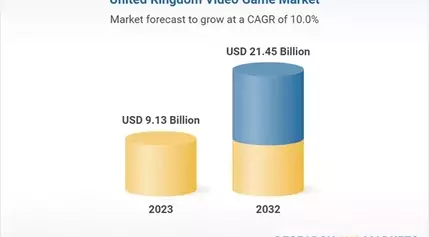
To thrive in a rapidly evolving global landscape, the United States must adopt a cohesive and forward-thinking approach to public investment. With Silicon Valley's innovation prowess and the Biden administration's legislative initiatives, there is an unprecedented opportunity to reshape how the government supports critical industries and technologies.
Transforming Public Investment: The Key to National Prosperity and Global Leadership
The Urgency of a Unified Strategy
The importance of a unified public investment strategy cannot be overstated. In today’s interconnected world, nations like China are leveraging aggressive industrial policies and substantial government subsidies to dominate key sectors. The United States, with its vast resources and technological prowess, must rise to this challenge. Yet, the current fragmented approach, characterized by disjointed agencies and conflicting mandates, undermines the nation’s ability to compete effectively.Consider the broader implications of this fragmentation. The U.S. government spends approximately trillion annually on lending programs aimed at supporting various constituencies. However, this figure only scratches the surface. Grants, research and development initiatives, and other forms of spending that serve investment-like objectives further expand the scope of federal involvement. Despite this massive expenditure, the absence of a clear, unified definition of public investment leaves significant gaps in strategic planning.The stakes are high. Public investment has historically played a pivotal role in groundbreaking innovations. From the early internet to global positioning systems and artificial intelligence, these advancements have not only transformed industries but also laid the foundation for future progress. The need for new solutions to address pressing challenges such as supply chain disruptions and climate change underscores the urgency of getting this strategy right.Bridging the Gap Between Policy and Innovation
While the Biden administration has made strides with legislation like the Inflation Reduction Act and the CHIPS and Science Act, these efforts alone are insufficient. Both acts aim to bolster green technologies and domestic semiconductor manufacturing, yet they fall short of a comprehensive, strategic vision. The success of these programs hinges on more than just funding; it requires a paradigm shift in how the government approaches risk and innovation.Historically, American public investments have favored safe projects and mature technologies. This cautious stance, while minimizing short-term losses, stifles the potential for transformative breakthroughs. For instance, the Department of Energy’s Loan Programs Office, which received 0 billion in new lending authority under the Inflation Reduction Act, has predominantly allocated funds to existing lithium-ion battery technologies. This focus on established fields, where China already holds a dominant position, limits the U.S.’s ability to gain a competitive edge.In contrast, emerging technologies like solid-state batteries offer a promising avenue for innovation. Despite their potential, these next-generation solutions receive minimal support—less than 1 percent of the department’s funding. This imbalance highlights the need for a bolder, more strategic approach that prioritizes high-risk, high-reward investments.Redefining Risk and Reward in Public Investment
A fundamental shift in mindset is essential. Instead of shying away from uncertainty, the government should embrace calculated risks to foster innovation. The aversion to loss that currently permeates public investment strategies is counterproductive. By focusing solely on proven technologies, the U.S. misses opportunities to develop cutting-edge solutions that could redefine industries and secure long-term competitive advantages.Take the example of artificial intelligence. Early government support for AI research led to the development of Siri, now a household name. Similarly, targeted investments in emerging fields can yield transformative results. The key lies in identifying nascent technologies with the potential for exponential growth and providing the necessary resources to nurture them.Moreover, fostering a culture of innovation requires collaboration between the public and private sectors. Private markets alone cannot meet the demands of national priorities such as climate change mitigation and supply chain resilience. Government intervention, guided by a clear strategic vision, can bridge this gap by facilitating partnerships and driving collective progress.Building a Future-Ready Framework
To achieve a future-ready framework, the U.S. must establish a centralized entity responsible for overseeing public investment. This body would ensure consistency across agencies, align mandates with strategic goals, and streamline decision-making processes. By fostering transparency and accountability, it would build trust among stakeholders and enhance the effectiveness of public investments.Furthermore, adopting a data-driven approach can optimize resource allocation. Leveraging analytics and predictive modeling can identify high-potential areas for investment, ensuring that funds are directed toward projects with the greatest impact. This evidence-based strategy would not only maximize returns but also mitigate risks associated with emerging technologies.Ultimately, redefining public investment is about more than just financial support; it’s about cultivating an environment where innovation thrives. By embracing bold, strategic investments, the U.S. can position itself as a global leader in technology and industry, securing a prosperous future for generations to come.New

Entertainment

Entertainment
















